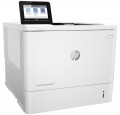First page print time
The time from the receipt of a print command to the exit from the printer of the first page printed in black and white, in other words, how long after pressing the "Print" button, the user will receive the first page. Most often indicated for draft (fastest) print mode, higher quality will take longer. You should pay attention to this parameter if you often need to print small documents (on one or several pages) on the printer.
Mono print
The black and white print speed provided by the printer. It should be noted that this parameter is often indicated for low quality when the device is running at maximum performance; at a higher quality (even at standard), the actual speed can be noticeably lower, so you should choose with a certain margin. Also note that high speed significantly affects the price, power consumption and noise level. Therefore, it does not always make sense to chase maximum performance — for simple applications (for example, at home or in a small office), a relatively slow and inexpensive device may be the best choice.
As for specific values, speeds
up to 20 ppm are considered relatively low,
20 – 30 ppm — average,
31 – 40 ppm — decent, and the fastest models are capable of delivering
more than 40 pages per minute.
Monthly resource
The maximum number of pages the printer can print in a month while still operating at full capacity.
Mono cartridge resource
The maximum number of pages that the printer's ink (toner) can print. The value is rather conditional, in reality the deviations from the norm are very large (up or down). In inkjet printers, the cartridge life is relatively small and amounts to several hundred prints. In laser and LED devices, the bill is already in the thousands.
Cartridge model
The types of cartridges (both black and white and colour) used in the printer. Some printer models are able to work with "non-native" cartridges, but this feature usually refers to undocumented features, and the manufacturer's warranty covers only specific types of cartridges. So use "non-native" models with caution.
Screen
The type of screen provided in the design of the printer. This parameter is indicated by two points — colour (monochrome or
colour display), as well as the absence or
presence of a touch screen(if only colour is indicated, then the screen is not touch).
Chroma determines the features of the image on the display. Monochrome (black and white) screens allow you to display a lot of different information, and are inexpensive. On the other hand, such a display is poorly suited for viewing drawings and photographs sent for printing — for such purposes it is better to use more expensive, but more functional colour screens.
As for touch displays, they provide additional convenience in management and expand its capabilities. Various controls can be displayed on such a screen — sliders, lists, text menus, etc.; operating them with touches on the display is easier than using traditional control panels with hardware buttons. On the other hand, the presence of a sensor affects the cost of the display, and it makes sense to use this feature mainly in advanced printers with an abundance of additional functions.
Screen size
The diagonal of the display installed in the printer.
The larger the display, the more convenient it is to use, the better you can see the image on it. Large-screen printers are especially useful when you need to view a variety of graphics on the screen. In addition, a large diagonal is highly desirable for touch screens (see "Display"). On the other hand, the larger the display, the more expensive it is and the more space it takes up, despite the fact that a small diagonal is enough for basic tasks and settings.
Grammage (max)
The maximum grammage on which the printer can produce normal print quality. For details about the weight, see "Paper Weight (Min)". An attempt to print on paper of a greater density than the maximum for this printer will, at best, end in nothing (the printer simply cannot capture the sheet), at worst, it can lead to a sheet jam in the printer, followed by the hassle of removing it.
RAM
The amount of internal memory installed in the printer.
The main purpose of such memory is to store tasks sent for printing. This gives various additional features: printing when the computer is turned off, continuing to work after troubleshooting, pausing the process and resuming at will, etc. The more memory, the wider these printer capabilities (in particular, large volumes allow you to store more tasks ).
Note that we are talking about the built-in memory; if the printer also has a hard drive (see below), its capacity is specified separately.

